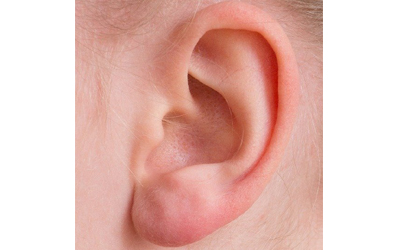Mastoidectomy
Mastoidectomy is a surgical procedure performed to remove the mastoid air cells, air bubbles in the skull, near the inner ears.

Some facts about Mastoidectomy:
- The cells in the hollow, air-filled spaces in the skull behind the ear within the mastoid bone, called as mastoid air cells will be removed in a mastoidectomy.
- An infection in mastoid air cells can be treated by doing a mastoidectomy.
- Part of the bone from behind the ear will be take away in a Mastoidectomy.
- The diseased part of the mastoid bone should be removed to treat the infection or cholesteatoma that spreads to the mastoid bone
- The condition is caused by an ear infection that spread to the bone in the skull in most cases.
- Mastoidectomy can be done as part of treatment for mastoiditis, cholesteatoma or chronic suppurative otitis media.
- Sometimes it is performed as part of other procedures such as cochlear implant or for access to the middle ear.
- Mastoidectomy may be used to treat cholesteatoma, complications of an ear infection (otitis media), infections of the mastoid bone that do not get better with antibiotics or to place a cochlear implant.
- Changes in taste, Dizziness, Hearing loss, Infection that persists or keeps returning, Noises in the ear (tinnitus), Weakness of the face and Cerebrospinal fluid leak are some of the risk associated with Mastoidectomy.

Types of Mastoidectomy:
Basically, there are five different types of mastoidectomy. These include:
- Radical Mastoidectomy is the removal of posterior and superior canal wall, meatoplasty and exteriorisation of middle ear.
- Canal wall down Mastoidectomy is the removal of posterior and superior canal wall, meatoplasty. Tympanic membrane left in place.
- Posterior and superior canal wall are kept intact in case of Canal wall up Mastoidectomy. A facial recess approach is taken for this procedure.
- Cortical Mastoidectomy also known as schwartze procedure is the removal of Mastoid air cells. The cell is undertaken without affecting the middle ear. This is typically done for mastoiditis.
- Modified radical is typically described as a radical mastoidectomy while maintaining the posterior and superior canal wall which reminds the reader of the Canal Wall Up Mastoidectomy. It involves treating disease affecting only the epitympanum. Portions of the adjacent superior and posterior canal as well as diseased areas are simply exteriorised without affecting the uninvolved middle ear. Hearing mechanism can be reconstructed at the time of surgery or in second-stage operation by keeping the structures preserved.
The mastoid and middle ear cavities are exteriorized in Radical and Modified Mastoidectomy, so as not to give the chance for the infection or the cholesteatoma to spread into the middle cranial fossa. Further inspection and cleaning could be done regularly, since the cavities are exteriorized.
Some hearing loss may be expected from a radical and modified radical mastoidectomy.
Preparation for Mastoidectomy:
- Usually the infections can be treated by antibiotic, but surgery is an option if antibiotics fail.
- You may need to stop taking some medicines that make it hard for your blood to clot at least two weeks before your surgery, including aspirin, ibuprofen (Advil, Motrin) and naproxen (Aleve, Naprosyn).
- Some herbal supplements may also need to be stopped if you are taking.
- You will be asked not to eat or drink after midnight the night before the procedure.
Procedure for Mastoidectomy:
- A mastoidectomy is usually performed by your doctor using general anesthesia to ensures that you are asleep and unable to feel pain.
- Your mastoid bone will be accessed by the surgeon through a cut made behind your ear.
- A microscope and a small drill will be used to open your mastoid bone.
- Suction irrigation will be used to keep the surgical area free of bone dust.
- The infected air cells will be drill out and the operative site will be stitched.
- The site will be covered with gauze to keep the wound clean and dry.
- A facial nerve monitor can also be used by your surgeon during surgery to limit injury to the facial nerve.
Recovery from Mastoidectomy:
- Stitches close to your ear and bandages over your ear when you wake up.
- There may be a small rubber drain.
- You may have a headache, discomfort, and some numbness around the operative site.
- The dressing will be removed the day after surgery. You may need to stay in the hospital overnight
- Your doctor may prescribe pain medication, give you antibiotics to treat any infection and ask you to schedule a return for wound check and removal of any bandages and stitches after the surgery.
- You should also refrain from putting pressure on your ear.
- All strenuous activity should be avoided for at least two to four weeks afterward, depending on your surgery.
Complications of a Mastoidectomy:
- Facial nerve paralysis or weakness can be caused by facial nerve injury, which is a rare complication.
- Sensorineural hearing loss may occur, which is a type of inner ear hearing loss.
- Dizziness or vertigo, that may persist for several days.
- There may be a change in taste that causes food to seem metallic, sour, or otherwise off. Often this may resolves after a few months.
- Abnormal noises in your ear such as ringing, buzzing, and hissing can caused by tinnitus.
- Call your doctor if you experience any of these symptoms or if you have heavy ear bleeding or discharge, a fever over 100.5 degreeF (38 degreeC), or if your wound is not healing properly.
